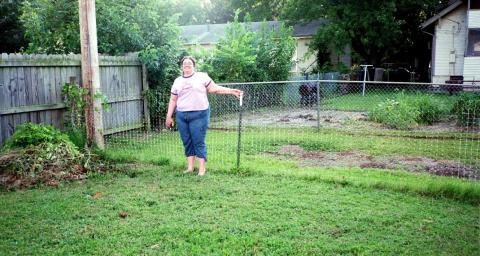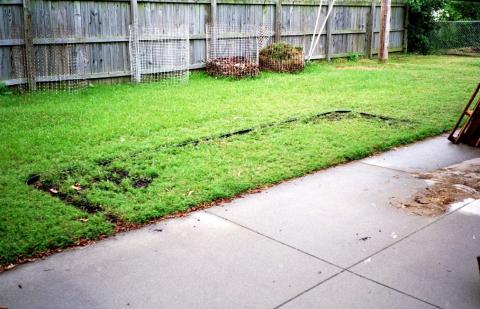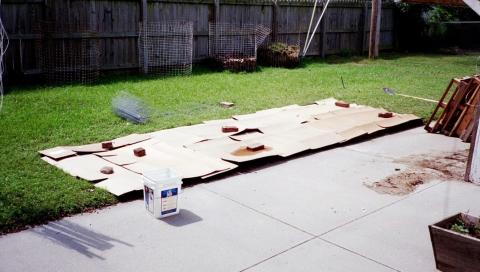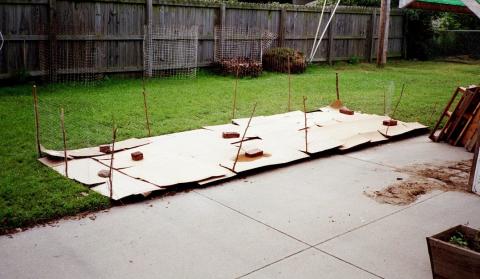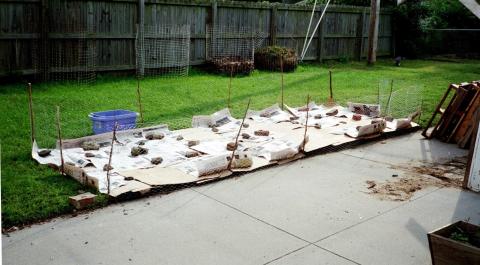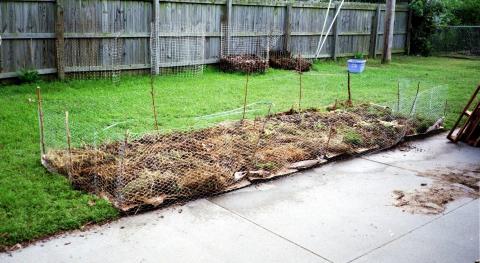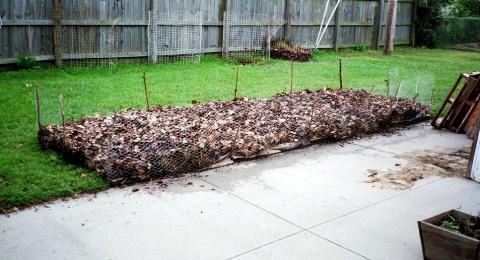Towards the end of August, Jessie and I decided to make our first strike against the lawn. I had already mowed the grass twice, and found that the back fence was nearly impossible to trim without a weed eater, and I didn't want to buy a weed eater. The fence also didn't serve any purpose -- it had been part of a dog pen, but the front part was long since taken down, so it didn't actually enclose anything; and also it was several feet outside the property line.
Oh, and it was made of exactly the kind of wire fencing that I wanted to make compost cages out of. A plan formed. We cut the fence into 12-foot lengths and made it into four 4-foot cages.
Then I got started on my first sheet mulch, in a convenient location just outside the back door. I was very pleased with myself and took lots of pictures (below). Then the plumbers told me we needed a new sewer line, which would have to be trenched right where I'd just put my garden plot. So I had to disassemble the whole thing and rebuild it (weeks later) in the front yard. Sigh.
Anyhow, the pictures are nice. View the album!
A previous owner had kept a dog in the back yard, and left behind an unattractive wire fence that was difficult to keep the grass out of. We decided to turn it from a liability into an asset. The big pile of plant matter is all volunteer trees that had grown up in the fence and along the north wall of the garage.
Another thing we didn't have to worry about in Fairfield was breaking the law by having uncontained compost. By Emporia law, any compost has to be contained... doesn't say how. Chicken wire, apparently a.k.a. "poultry netting," does the trick! The fence posts are volunteer trees, mostly children of the neighbor's tree of heaven, that grew up in the old fence and along the north side of the garage.
For a compost to decompose cleanly, it needs equal parts by volume of "green" matter (such as grass clippings or vegetable scraps) and "brown" matter (such as dead leaves, sawdust, or newspaper). For this first sheet mulch, I didn't have a lot of grass clippings collected yet, so I used some vegetable scraps including some big stuff like corn cobs and whole apples... and then I worried that they might not be done decomposing by springtime, so it was kind of a relief when the sheet mulch had to be taken apart; it gave me the chance to do it properly the second time.
- Log in to post comments

